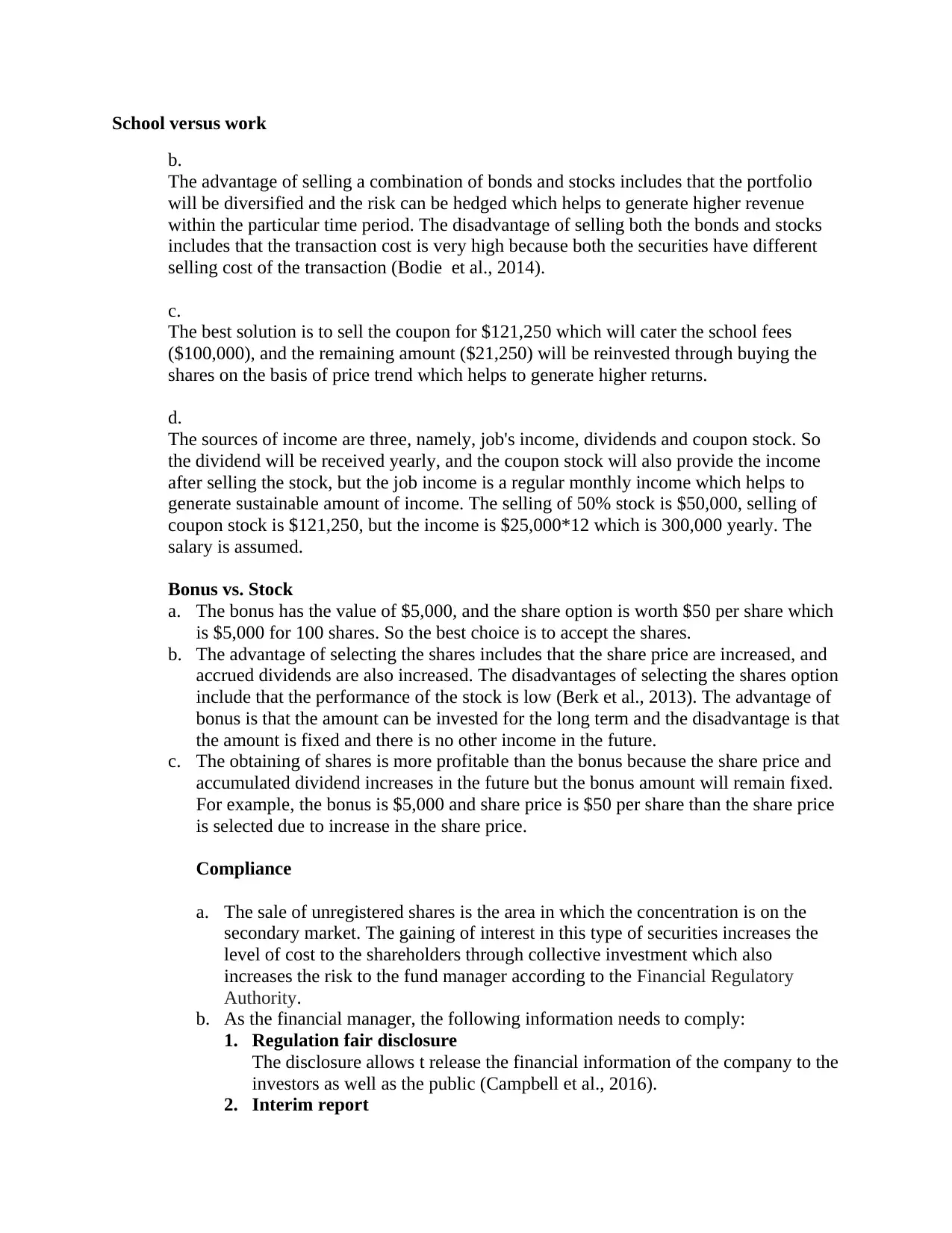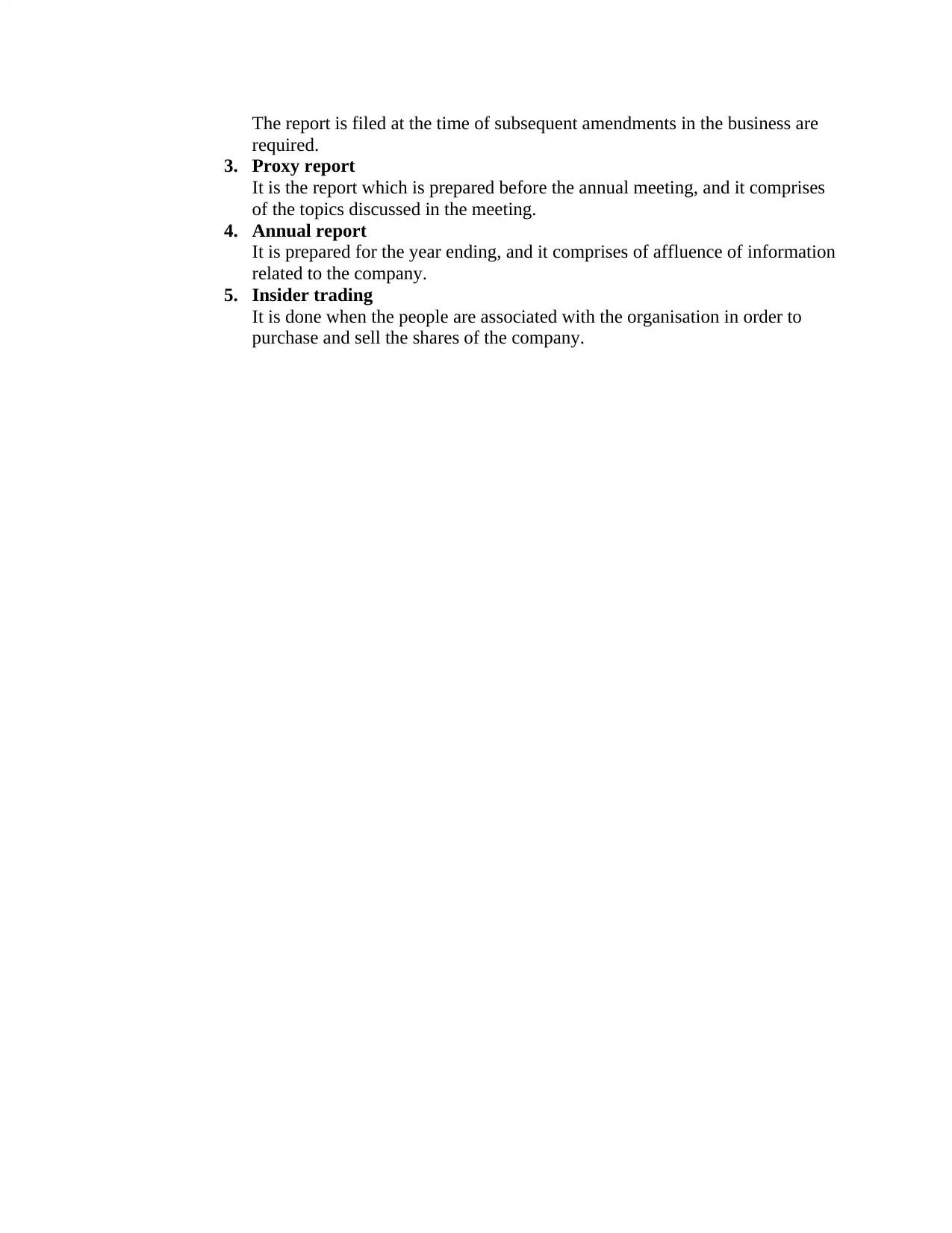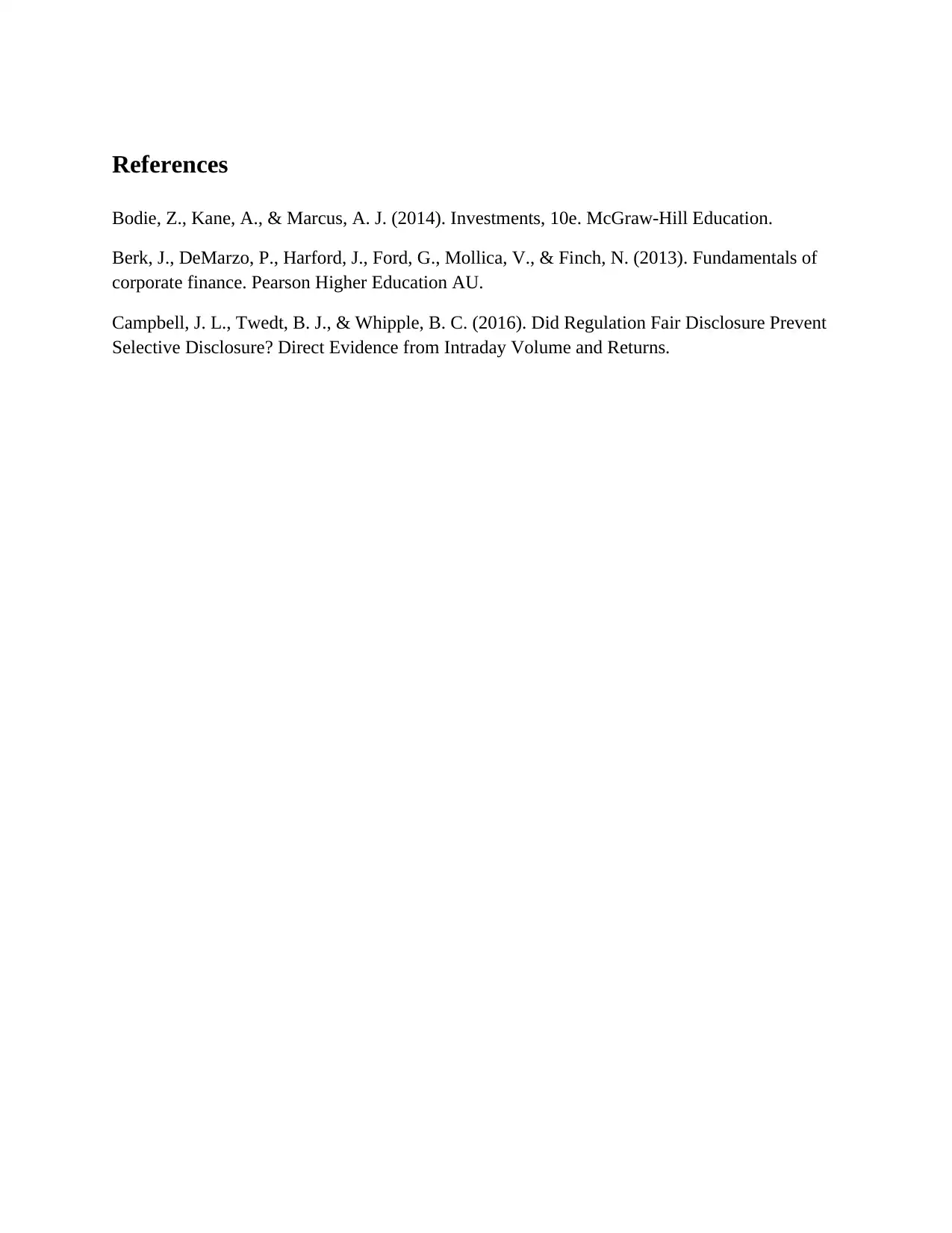Corporate Financial Decisions: Analyzing Investments and Compliance
VerifiedAdded on 2019/09/18
|4
|687
|142
Homework Assignment
AI Summary
This assignment delves into key corporate financial decisions. It explores the advantages and disadvantages of selling bonds and stocks, recommending a strategy to sell coupon stocks to fund school fees and reinvest the remainder. The assignment then compares bonus and stock options, concluding that shares are more profitable due to potential price increases and dividends. It also addresses compliance issues, particularly the sale of unregistered shares, and outlines the information a financial manager must comply with, including Regulation Fair Disclosure, interim reports, proxy reports, annual reports, and insider trading. References to relevant financial literature are provided.
1 out of 4











![[object Object]](/_next/static/media/star-bottom.7253800d.svg)